8+ Must-Know Tips for Beginner Runners
The best beginner running tips are the ones that keep you healthy, strong, and motivated to continue. Learn how to breathe, plan, and sustain your stamina!
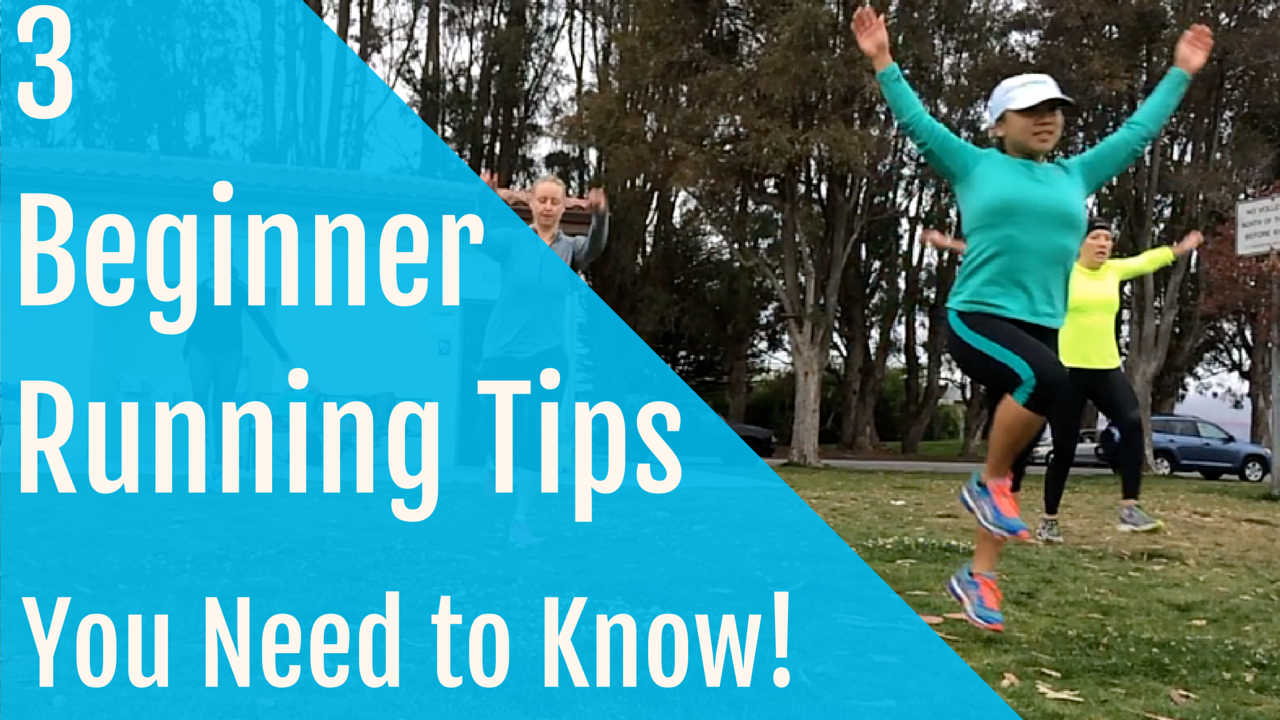
Welcome to the exhilarating world of running! Whether you're lacing up your shoes for the first time or reigniting an old passion, beginning your running journey is a step towards a healthier, more active lifestyle. Remember, every seasoned runner once stood where you are now—at the exciting start line of their running adventure.
In this guide, we've compiled over 10 essential tips to help you navigate the early stages of your running journey. These tips aren't just about putting one foot in front of the other—they're about laying a solid foundation for a sustainable and enjoyable running practice. From mastering your breathing to understanding the importance of rest, we cover everything you need to transform from a beginner to a confident runner.
Running is more than just a physical activity—it's a journey of self-discovery and perseverance. Our tips are designed to keep you healthy, motivated, and engaged, ensuring that your running experience is as rewarding as it is challenging. So, whether your goal is to run a 5K, improve your fitness, or simply enjoy the outdoors, these beginner-friendly insights are your roadmap to success.
Tips for Beginner Runners
Embarking on a new running journey is an exciting and transformative experience. As a beginner, you have a unique opportunity to establish habits and routines that will set the tone for your entire running career. To support you on this path, we’ve compiled a series of essential tips specifically tailored for those new to the running world.
Each tip is crafted as a stepping stone, helping you build endurance, improve technique, and enjoy every stride. Whether you’re aiming for a specific race or just looking to enhance your overall fitness, these tips provide the insights and encouragement you need to progress confidently.
Remember, every runner's journey is unique, but there are common threads that bind all successful running experiences. These tips are those threads, woven together to guide, inspire, and empower you as you take each new step.
1. Practice Your Breathing
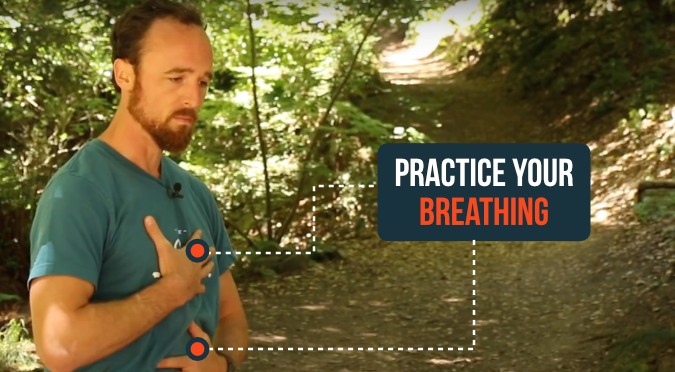
Take note of your current running posture. Are you slumped over in your chair, car, or couch reading this?
Sit (or stand) up straight!
Optimal oxygen intake means creating space for the maximum amount of air to get into. Sitting and standing up straight gives your diaphragm maximum room to expand and take in oxygen. Who knew our mothers were onto something way back when at the dinner table?
Here’s a little breathing drill you can add into your run routine:
- Before leaving for the run, take 10 big belly breaths. Keep one hand on the chest and one hand on the belly to feel full expansion with each breath. Inhale through the nose and exhale through the mouth.
- For the first 5 minutes of your run, breathe only through your nose. Take the speed down if you need to, but stay committed to this type of breathing. It will set you up for breathing tips for running, as well as encourage your shoulders and neck to relax into your stride.
We believe this to be one of the most important beginners running tips to implement.
2. You’re An Athlete, Not Just A Runner!
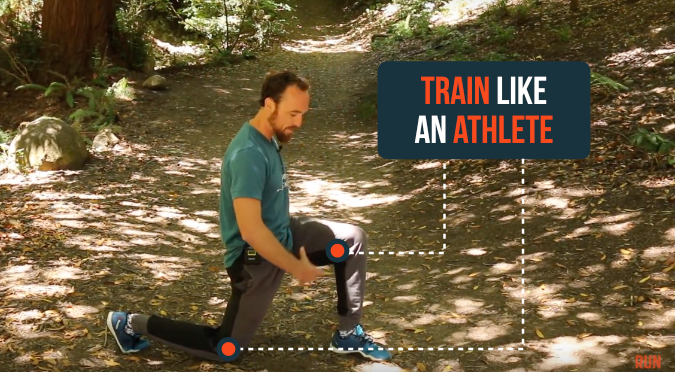
As beginners, it’s easy to categorize ourselves as runners…and just runners.
When we do this we limit ourselves to thinking we only need to run to get better at running. This is not the case!
Strength training and conditioning built into your weekly training regimen can make a world of difference in your ability to stabilize the shoulders, core, and legs for optimal run form… as well as help you to prevent injuries before they occur!
Take for example a lunge:
- It helps us access, identify and address the weakness in the glutes & hamstrings
- It forces us to find our core strength when the balance is compromised in a split leg position
- It opens up our hip flexors for an improved range of motion in our stride
- When done alternating continuously for a set period of time, it challenges our breathing and ability to maintain good form through fatigue
Here’s a little challenge for you:
Try to continuously alternate lunges for 5 minutes. Step out with the right foot, come back to two feet, step out with the left foot, come back to two feet, etc. For an additional challenge, hold dumbbells (either down by your hips or up on your shoulders).
3. Don’t Overdo It!
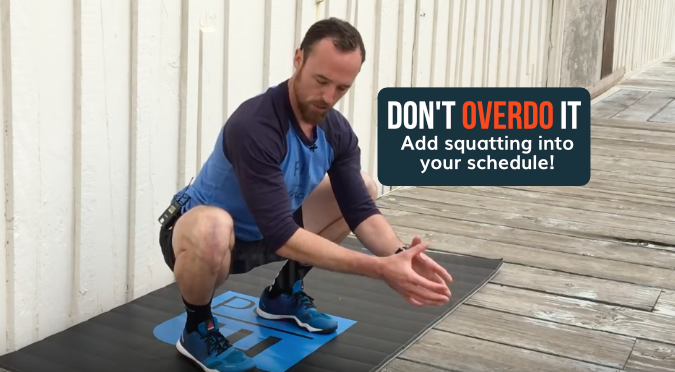
As a beginner in anything, it’s tempting to jump in head first! We can definitely relate to that excitement of starting something new and committing to it with all of your efforts. Not to mention, there’s no better feeling than officially being able to call yourself “a runner” 🙂
But just because you’re new, doesn’t mean you don’t have to train SMART.
Here are a few ways to build a solid training plan:
- Schedule both your run & rest days. Recovery is just as important as accumulating mileage.
- On your rest days and for at least a few minutes on your run days, do something good for yourself. Mobilize, take a bath, foam roll…work on something.
- Mix it up. If you run hills one day, run flat the next. If you run on a treadmill on Tuesday, run outside on a dirt trail on Wednesday or Thursday. *Here’s some advice on that terrain transition.
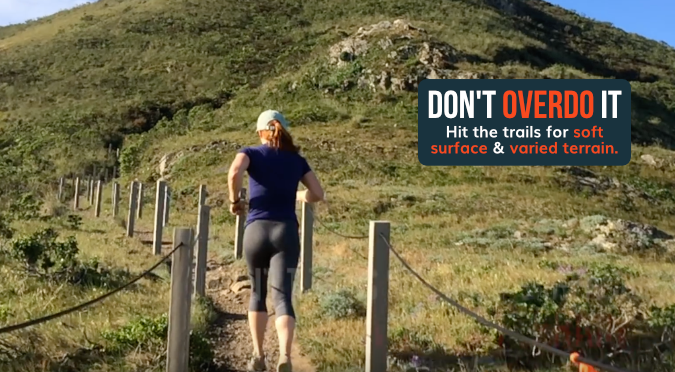
Bonus suggestion for your rest days: spend 3 minutes in the bottom of your squat position. Watch your hips, ankles, and knees open up instantaneously.
4. Set Realistic Goals
Goals give you a clear direction and purpose, making your runs more meaningful and rewarding. Whether it's completing a certain distance, improving your time, or simply building a consistent running habit, having a specific aim helps you stay focused and motivated.
Begin with easily attainable goals. If you're new to running, a goal like running non-stop for 5 or 10 minutes is a great start. These small victories lay the foundation for more ambitious objectives.
Your running goals should fit into your current lifestyle. If you have a busy schedule, aiming to run an hour every day might be unrealistic. Tailoring your goals to your personal circumstances increases the likelihood of success.
As you achieve your initial goals, gradually increase the challenge. If you started with running 10 minutes non-stop, your next goal might be 20 minutes, and then a specific distance like 5 kilometers.
5. Listen to Your Body
Listening to your body is a vital skill for beginner runners. It involves being attuned to the signals your body sends you during and after your runs. These signals can range from normal physical exertion to warning signs of potential injury or overtraining.
It's normal to experience some level of discomfort when you start running, as your body adapts to the new activity. This might include muscle soreness or general fatigue. However, sharp, persistent, or localized pain is a red flag. Pain in joints, bones, or muscles that worsens with activity should not be ignored.
Some tiredness is expected, especially after a challenging run. However, if you're feeling constantly exhausted or your performance suddenly drops, it could be a sign of overtraining. Adequate rest and recovery are just as important as the training itself.
Pay attention to your breathing and heart rate. If you find yourself gasping for air or your heart rate stays elevated long after your run, it may indicate you're pushing too hard. Learning to pace yourself according to your fitness level is key.
By learning to listen to and interpret your body's signals, you can create a more enjoyable and sustainable running experience. This self-awareness is key to progressing as a runner while staying healthy and injury-free.
6. Track Your Progress
For beginner runners, tracking your progress is more than just a motivational tool—it's a roadmap that shows how far you've come and where you're heading. Monitoring your running journey helps you recognize improvements, understand patterns, and make informed adjustments to your training plan.
Utilize smartphone apps or wearable devices to track your runs. These tools can provide valuable data like distance, pace, elevation, and heart rate. Popular apps like Strava, Runkeeper, or Nike Run Club offer user-friendly interfaces and supportive communities.
Seeing tangible evidence of improvement is highly motivating. It reinforces your commitment and helps in setting new, more challenging goals.
Tracking can reveal patterns in your performance. You might notice you run better at certain times of the day, or after eating specific foods, allowing you to tailor your routine for optimal performance.
Make it a habit to review your progress weekly or monthly. This helps you stay on track with your goals and make timely adjustments.
7. Prioritize Recovery
Recovery is not just a break from training—it's an integral part of your running regimen. For beginners, prioritizing recovery is essential to avoid injuries, reduce fatigue, and improve overall performance. Proper recovery allows your body to heal, adapt, and strengthen in response to the stresses of running.
Effective Recovery Strategies:
- Adequate Rest: Ensure you get enough sleep. Sleep is when most of the body’s healing and muscle repair occurs. Aim for 7-9 hours of quality sleep each night to aid in recovery and enhance performance.
- Rest Days: Incorporate rest days into your training schedule. These are days where you either don't run or engage in very light, non-strenuous activities. Rest days help prevent overtraining and give your muscles time to heal.
- Post-Run Cool Down: Always include a cool-down routine after your runs. This can be a light jog or walk, followed by stretching. Cooling down helps to gradually lower your heart rate and reduce muscle stiffness.
- Hydration and Nutrition: Replenish your body with fluids, electrolytes, and nutrients after your runs. Hydration aids in recovery, while a balanced diet rich in protein, carbohydrates, and healthy fats supports muscle repair and energy replenishment.
- Foam Rolling and Massage: Use a foam roller or consider occasional massages to alleviate muscle tightness and enhance blood flow. This can aid in muscle recovery and flexibility.
- Listen to Your Body: If you feel overly fatigued or experience persistent aches and pains, it may be a sign to take an extra rest day or reduce the intensity of your runs.
8. Start with a Run/Walk Strategy
For beginner runners, the run/walk strategy is a highly effective and less intimidating way to get into running. This method involves alternating intervals of running and walking, gradually increasing the running segments over time. It's a fantastic approach to build endurance, reduce the risk of injury, and make running a more enjoyable and sustainable activity.
Start with short running intervals interspersed with longer walking breaks. For example, you might run for 1 minute and then walk for 2 minutes, repeating this cycle for the duration of your workout.
As your fitness improves, gradually increase the running intervals and decrease the walking breaks. For instance, transition to running for 2 minutes with 1-minute walks, and continue to adjust as you get more comfortable.
Embrace Being a Beginner Runner with These Tips
You won't be a beginner runner forever, so enjoy it while you can.
Need some ideas for mixing up your runs with strength work and mobility? Download this FREE 2-Week Training for access to tons more beginner running tips like these.
